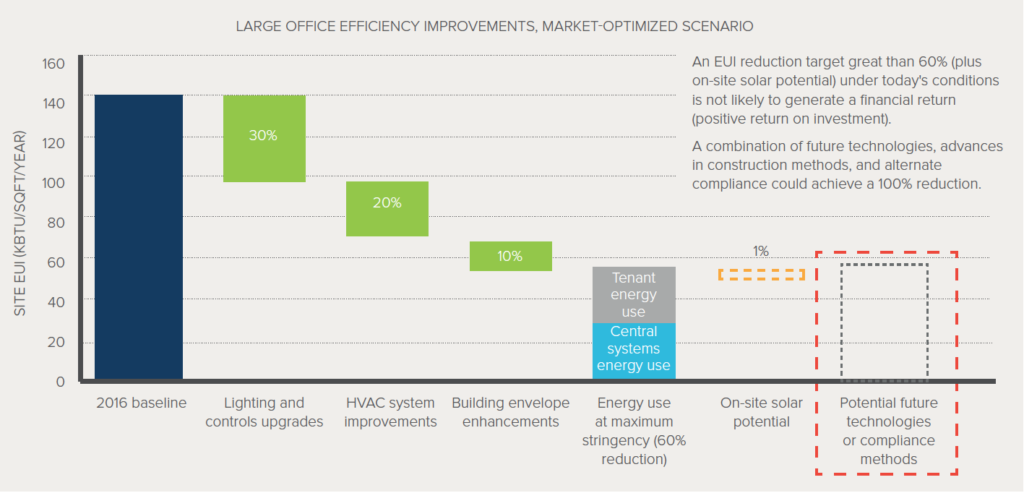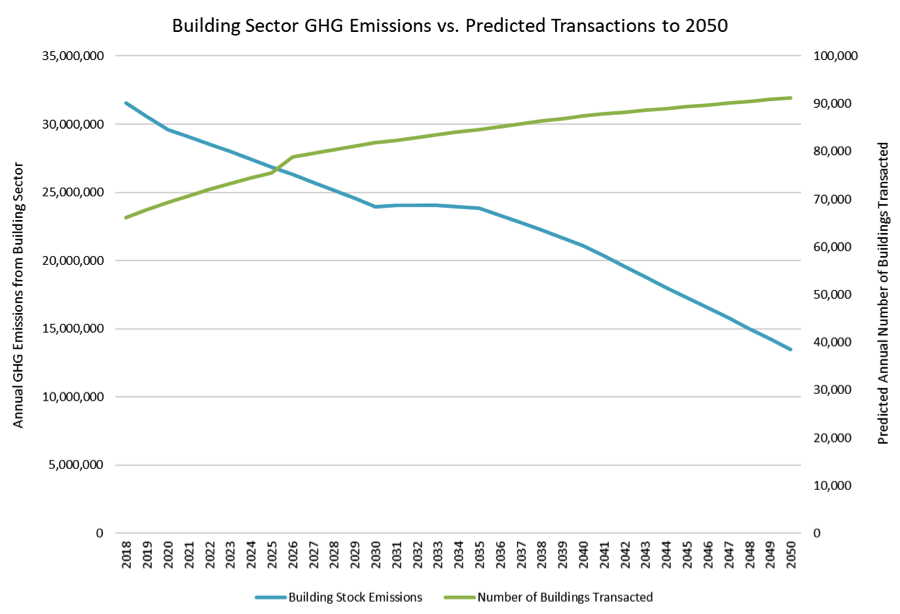
Policies for Better Buildings
Cost-Effective Ways Cities Can Cut Carbon, Slash Costs, and Create Jobs
Cities consume over two-thirds of the world’s energy and account for more than 70 percent of global CO2 emissions, while occupying only 2 percent of its land area. Many cities are well aware of their substantial carbon footprints and have made commitments to emissions reductions and conducted emissions audits to target certain sectors. Overwhelmingly, cities have seen that the energy consumption of existing buildings accounts for the greatest source of their carbon emissions—constituting 64 to 73 percent of citywide carbon emissions in the three most populous cities in the United States. Most existing buildings are decades old, suffer from substantial deferred maintenance issues, and have significant potential for cost-effective energy retrofits.
Reducing energy use in existing buildings is critical to driving down citywide carbon emissions and achieving a city’s emissions goals. Many cities have already implemented policies and programs that target existing building energy reductions, and are making real progress toward their carbon goals. However, many of these policies address only technology-specific measures, as opposed to more holistic deep retrofit packages that bundle measures to enable greater energy and cost savings over time. A holistic approach to building and citywide energy reductions is necessary to drive cities all the way to their carbon-reduction goals swiftly and cost-effectively.

Rocky Mountain Institute’s latest insight brief, Policies for Better Buildings: Cost-Effective Ways Cities can Cut Carbon, Slash Costs, and Create Jobs, describes how cities can leverage thoughtful policies to swiftly and cost-effectively deploy energy efficiency and distributed renewable energy systems. Packaging multiple policy elements together can unlock substantial carbon emissions reductions while driving job creation, increasing tax revenue, and developing new markets for renewable energy and energy efficiency. Understanding baseline energy consumption and evaluating policies using a citywide model are critical to understanding the efficacy and potential impact of a policy targeting existing buildings.
A Policy Framework that Drives Deeper Savings
RMI developed a comprehensive framework to develop retrofit policies that drive deeper carbon savings for cities. We tested this framework by analyzing New York City to develop a policy recommendation that would help the city meet its 80 percent emissions-reduction target by 2050. This framework is based on an outcome-based energy code, among other key components, and is comprised of four key steps:
- Identify effective and appropriate triggers: Triggers are events that prompt energy upgrades and that align with key market intervention points, such as point-of-sale or point-of-lease negotiations. Aligning building retrofits with key trigger points such as market events and building life-cycle events can make projects more cost-effective, ease implementation, and provide a logical point in the building’s life cycle for a policy to come into effect. The insight brief details a range of trigger points, including point of sale, building refinancing, and end of major equipment lifetime.
- Approach interventions holistically: The core “event” that is prompted by the trigger can be most broadly defined as an energy upgrade requirement. It is important that this requirement point toward a more holistic solution, reward projects that address energy reductions across multiple building systems, and complement other energy efficiency goals or targets in place.
- Recognize and respond to enabling factors: Policy designers should understand the key factors that could enable or prevent success for the policy being considered. It is helpful to segment the existing building market to understand pain points within the market and the building types that would be simplest or most cost-effective to retrofit. Examples of enabling factors covered in the insight brief range from building stock age to local construction costs.
- Apply iterative and rigorous cost optimization to ensure market stability: An iterative evaluation process that includes financial analysis is critical when analyzing a policy package. Although a policy’s effectiveness is partially measured by emissions-reduction outcomes, a policy can only be effective if it is politically viable, adopted, and accepted by the market. This requires evidence of affordability and market stability.
This policy approach can dramatically accelerate code compliance within a city, is rooted in an appropriate trigger for each building, follows an outcome-based approach (code compliance), and can be designed for each city to support market viability with a rigorous and objective approach.
Policy in Action—Case Study Findings
RMI used this approach to evaluate a point-of-sale building energy efficiency upgrade policy for New York City and found that:
- New York City could achieve a 67 percent emissions reduction in the buildings sector (including existing policies, grid emissions reductions, reductions from solar goals, and fuel mix changes), in support of its 80 percent overall emissions-reduction goal by 2050 if it were to implement a point-of-sale energy efficiency requirement.
- Buildings could realistically achieve up to ~60 percent energy savings on average through deep energy retrofits.
- Energy efficiency upgrades are cost-effective as stand-alone projects until energy savings reach 30 to 50 percent, according to an assessment of return on investment and net present value.
- Temporary alternative compliance in the form of local renewable energy offsets until a trigger is hit was a critical part of the recommendation for this city, as building efficiency upgrades and on-site renewable energy are limited by space and financial constraints.

Conclusion
Cities and states need bold policies to reduce emissions from existing buildings and achieve the audacious climate goals that they have set. They must tailor energy-reduction policies to the unique characteristics and market forces at play in their own cities to have the greatest impact. A robust, citywide impact model is necessary to characterize the full impact of policies, understand feasibility and market dynamics, and uncover potential roadblocks.
This approach to developing a holistic policy for decarbonizing a city’s building stock can help cities take the first steps toward achieving and exceeding greenhouse gas emissions-reduction goals. We hope that cities will leverage this guide and reach out to RMI for any further guidance.
The first step has already been taken in committing to emissions reductions; now it is time for cities to take action by implementing bold policies.
Download the Policies for Better Buildings: Cost-Effective Ways Cities Can Cut Carbon, Slash Costs, and Create Jobs insight brief.